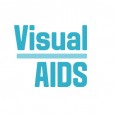To our community:
Visual AIDS stands in solidarity with protesters across America who are standing up against police violence and a system that continues to diminish the value of Black life. We demand justice and call for action, not only in response to the murders of Ahmaud Arbery, George Floyd, and Breonna Taylor, who would have turned 27 years old today, but also Nina Pop and Tony McDade, two trans people whose murders have been largely ignored by the media.
We recognize that these murders are only the most visible aspects of the deeply ingrained racism and white supremacy that our country is founded upon, and we call on our elected officials to respond with transformative, systemic change. [Click here for a list of ways to take action and educate yourself.]
We also recognize that white supremacy, anti-blackness, and implicit biases permeate our own communities and our organization. Visual AIDS was formed by four white, gay men in 1988, who used their positions of power in the art world to call attention to the urgency of the AIDS crisis at a moment when neither the media nor the government acknowledged the epidemic’s toll on the gay community, let alone communities of color. Today, the disproportionate impact of HIV on Black lives continues to be ignored in conversations about both the past and the present of the epidemic.
Our work has long understood that there is no singular narrative around HIV and AIDS, and the Visual AIDS Archive Project was envisioned to preserve the experiences and expressions of a broad range of artists living with HIV. Since 1994, Artists Members have entrusted us with caring for their living archives with compassion, integrity, safety around disclosure, and contemporary vision. In recent years, we have worked to intentionally represent a greater number of artists of color in our archive and our programming, and we recognize that there is much more to do. We are currently in the process of developing a long-term collection strategy to continue and deepen this work, and we commit to employing all of our programs as platforms to educate about overt and covert racism, and to inspire change. [Learn more about how Visual AIDS is responding to the whitewashing of cultural histories of AIDS.]
In striving to enact anti-racism in our work, we also recognize that representation is not enough. In light of recent events, we publicly commit to producing a long-term plan for addressing racism and white supremacy within our organizational structures and practices, including increasing Black and Brown leadership at every level of our work, from our staff and board of directors, to committees and programs.
We write this in a moment of urgency, while understanding that, like HIV and AIDS, anti-Black violence and white supremacy are ongoing and often overlapping crises, and that we must continue to work against them even when they are not discussed on a national level or in the mainstream media.
We want to acknowledge the organizations doing the essential work on the ground right now, and encourage you to donate to support them. [We have compiled a list of organizations here.]
Take action, donate, and learn what white supremacy looks like.
In love and solidarity,
The Visual AIDS Staff
Nancy Chong
Kyle Croft
Tracy Fenix
Esther McGowan
Blake Paskal








Comments
Comments